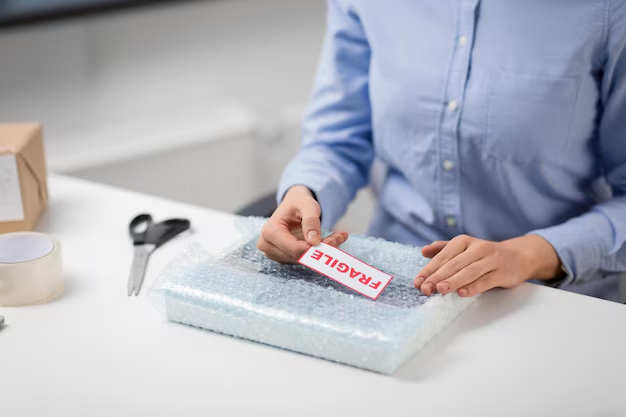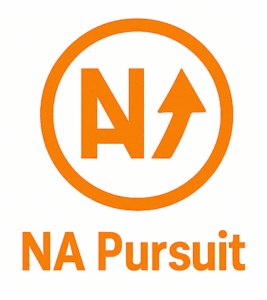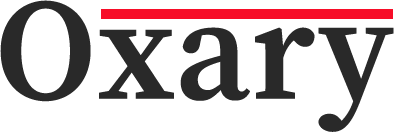Product Liability’s Tsunami: Is Your Insurance Sector Ready?
Overview:
As a result, the product liability insurance market is entering a new and potentially volatile phase that merits careful consideration by insurers and businesses. A mandate for change: Consumer awareness is growing, technology for product development and use has advanced, and the law is evolving, leading to an uptick in both the frequency and severity of product-related claims. Take, for instance, the influx of class action lawsuits over purportedly defective consumer electronics, or the rising costs of recalls in the automotive sector — these are not isolated instances, but signals of a structural change. The financial impact for organizations not managing this risk is significant.
Although the insurance sector has traditionally provided a buffer against these threats, there are legitimate questions about its current state of preparedness. Underwriting practices, for example, need to adapt to the speed of technological progress and the growing interlinked nature of the supply chain. Conventional risk models that use historical data might fail to account for the unpredictable nature of new risks associated with AI-powered products or complex worldwide supply chains. More aggressive litigation strategies and bigger settlements are also challenging the strength of current policies. Such vulnerabilities raise questions about the industry’s ability to internalize these growing liabilities.
At the end of it, this blog post will try to break down these challenges. We will delve into the factors contributing to this “product liability tsunami”, evaluate the pros and cons of existing insurance mechanisms, and discuss what it takes to build a more effective and resilient product risk management system. For insurers and businesses grappling with this evolving landscape, pandemic preparedness — and a proactive, rather than a reactive, approach to epidemic risk — is critical. The question is no longer simply whether the sector can withstand these pressures; rather, the question is whether it can find itself at the forefront of proactively reducing product liability’s future burden.

Introduction: The product liability insurance industry helps its consumers to recover from the risk of financial loss that is due to defects in their products that caused damage to bodily injury or property. It is a very dynamic market that is influenced by changing regulations, increasing consumer awareness and technological innovation.
Analysis of Key Trends:
Positive Trends:
Higher Integration of Data Analytics and AI
- Trend: Insurers are harnessing machine learning and artificial intelligence (AI) to more accurately evaluate risk, customize policies, and improve the claims process. As an example, AI can assess product recalls, customer reviews, and social media sentiment to detect potential liability problems before they blow up.
- Impact: This equates to better risk assessments, potentially reduced costs for businesses offering demonstrable safety in their products, and quicker, more effective resolutions to claims.
- For instance, insurance firms are utilizing AI enabled to deliver customized insurance products and claims settlement.
- Actionable Insight: Build a strong infrastructure for both data collection and reporting. Provide insurers with pertinent safety data in order to perhaps lower premiums. Adopt synthetic products for predictive analysis of potential defects
E-commerce and Direct-to-Consumer Sales Growth:
- Trend: The growth of online retail has widened the reach of product significantly, leading to new sales channels and also increasing the potential for product liability.
- Impact: It is widening the arena for product liability insurance. Companies require policies covering multijurisdictional sales.
-
Example: However, this does not update your insurance policy or give you product liability coverage.
- Actioning Insight: Make certain policies are global by design, considering their varied regulation by jurisdiction. Team up with insurance providers who know the intricacies of internet commerce and have fine-tuned coverage for you.
Adverse Trends:
1.Increasing Litigation and Larger Settlements:
- Trending: More product liability lawsuits are resulting in larger settlements and higher claim costs, frequently due to increased consumer awareness and a more litigious climate.
- Outcomes: This is exerting upward strain on insurance premiums and making it ever more difficult to get coverage, especially for companies in higher-risk industries (e.g., pharma, automotive).
- For example, the notice about the accumulation to date of the ongoing litigation related to talc powder products creating multi-billion dollar settlements affects the cost and availability of product liability insurance in the manner described in the notice related to the industries involved.
- Takeaway: Ensure product safety and quality control to limit liability Implement a robust risk management strategy and document well. Early in the dispute: consider alternative dispute resolution mechanisms to save on litigation costs.
2.Proliferating Regulatory Oversight and Shifting Standards:
- Trend: Increasingly strict and evolving product safety rules, domestically and abroad, put a premium on vigilance from companies. Failure to do or be so can result in significant fines, damage to reputation, and increased exposures to product liability.
- Effects: This necessitates businesses to stay abreast of all relevant regulations, establish stringent compliance practices, and verify that their insurance policies are in conformity with the latest mandates.
- For example, tighter regulations governing data privacy and cybersecurity in relation to connected devices are adding layers of complexity to product liability coverage for manufacturers of IoT products.
- Insight to Put into Action: Formulate a specialized compliance team to consistently monitor and adapt to changing regulatory measures. Schedule appointment with legal professional whose expertise is product liability and gives opinions on related industry regulations. Perform periodic compliance audits and keep detailed records.
3.Supply Chain Complexity & Globalization:
- Trend: As optimal global supply chains become more complicated, it gets harder to trace the origin and quality of what goes into products. This creates a significant barrier in proving liability and potentially leaves some businesses exposed.
- Impact: This exposure to latent defects and contamination increase risk to the owners with the claims management process being cloudy particularly for multi party cases.
- Example: Retailers and suppliers face complex liability claims from a food recall tied to tainted ingredients sourced abroad.
- Actionable Insight: Ensure transparency and visibility throughout entire global supply chains. Choose suppliers that are well-known and compliant with business regulations. Implement and negotiate indemnity clauses in supplier agreements to allocate risk sensibly.
Concluding Evaluation:
The market for product liability insurance is currently navigating a challenging landscape that presents both opportunities and hurdles. Positive trends such as AI adoption and e-commerce growth can increase productivity and provide more targeted solutions. Yet increasingly the litigation and regulations and their intricate supply chains reach high tide and the challenges abound. In order to succeed in this landscape, organizations should make risk management the front and centre of their operations, create solid compliance checks, and leverage partnerships with insurers willing to offer bespoke and holistic coverage. Businesses will no longer be dipping their toes in the water, they will be proactively adapting to trends rather than reactive response, to keep their place in a growing market.
Health Care A company that manufactures medical devices creates a new surgical stapler. A malfunctioning stapler injures a patient badly during a procedure. Product liability insurance protects the manufacturer from the legal defense fees, settlements, and possible judgment against the manufacturer because of the patient’s lawsuit. Such a situation only reinforces the fact that we need solid coverage in healthcare when the stakes are high. The claim would examine the product’s design, manufacturing and quality control processes.
Tech: A software company debuts an accounting package. Through a coding misformat, the software makes an error in calculating finances, which results in the loss of a great amount of money for the business that depended on it. The company which has been affected claims compensation. Product liability insurance kicks in to pay for the financial damages caused by the software’s breakdown, as well as related legal costs. This example demonstrates why even intangible products, such as software, need strong product liability protection.
Automotive: A car maker puts a bad airbag sensor in one of its makes and models. In this scenario, the defective sensor causes an airbag to deploy unsafely and the driver is involved in a car accident causing serious injury. Claims arising from injuries and damages caused by the faulty sensor would fall under product liability insurance coverage. The policy would cover both individual and class action lawsuits due to the recall and the safety defect.
Manufacturing: An industrial machinery manufacturer sells a high-volume conveyor belt system. A workplace accident occurs when the conveyor belt malfunctions after it has been installed. Product liability coverage pays for bodily injury claims from the injured worker and property damage claims from the company that purchased the defective system. This highlights the driving need for manufacturers in a B2B environment to work with an independent company who understands their coverage needs.
Food & Beverage: A food processing facility manufactures canned vegetables. A batch of cans is inadequately sealed, allowing for the growth of botulinum toxin, a deadly foodborne bacteria. Multiple consumers fall seriously ill. The product liability insurance of the manufacturer would take care of the costs related to recalls, medical treatments, lawsuits, and damages for the food contamination. This highlights the importance of liability cover for consumer goods manufacturers.
In each of these scenarios, product liability insurance provides a crucial financial lifeline for companies facing potentially devastating legal costs and damages associated with defective or unsafe products. It helps businesses to balance the challenges of product related litigation with the need to resolve their cases promptly and without any interruption or hindrance to their operations.
Key Strategies in Product Liability Insurance (2023 Onward)
Organic Growth Strategies:
- Advanced Data Analytics & Risk Modeling: Organizations are investing in data analytics systems tailored for granular feature examination for a better understanding of product risk. This involves employing AI and machine-learning to analyze product recalls, consumer complaints, and social media data for upfront indicators of potential liability. For instance, a company could mine trends within consumer reviews that reference a particular product defect to more acutely predict and price correlated risks. It facilitates more customized coverage and minimizes the risk of unexpected claims.
- Review of Broader Product Coverages: Insurers are also beginning to offer coverage more specific to categories of product, as opposed to broad policies. This includes product categories ranging from electric vehicles to medical devices and AI driven software. This addresses the specialized liability tool demands of emerging technology. For example, an insurer specializing in medical devices might issue a specialized policy that addresses the risks presented by remote patient monitoring and data privacy breaches. This segmentation leads to more accurate pricing and improved risk management.
- Shift Towards Preventative Services: Insurers are beginning to offer value-added services, such as product safety consultations and risk management workshops, to their policyholders. The goal of this proactive Agency action is to preemptively mitigate potential claims. Some of these services might involve audits of a manufacturing process or assist companies in establishing recall procedures, which result in lower claims and more favorable risk profiles for both insurer and insured.”
Inorganic Growth Strategies:
- Mergers and Acquisition of Tech Firms: Many insurance companies are acquiring or partnering with tech firms that specialize in sectors such as IoT (internet of things) data analysis and risk assessment. This enables them to embed sophisticated technology within their product liability products. As an example, an insurer may purchase a company that offers real-time product monitoring and performance data to increase their risk model and their underwriting process.
- Geographic Expansion Mergers: There is a growing trend for mergers to grow market share and enter different customer bases and regulatory environments. This means that the insurers can build on uses of their existing expertise in new territory and services that cover a broader measurable of regional liabilities.
Strengths & Weaknesses:
Strengths include accurate risk pricing which may lower the premium for low-risk products, and fewer claims from preventive actions. Strengths include the big data as a significant opportunity for spending and cloud-based integration and data management. Challenges of merging Organizational cultures and processes need to be integrated.
Evaluation:
Both organic and inorganic efforts reveal a larger trend toward data-driven, preventative risk management in the product liability arena. Insurers will be active, collaborative partners, not merely financial backers. How well they actually adopt technology solutions, address data privacy issues, and hold on to customer-friendly strategies in the face of new market realities will determine if this success continues.

Outlook & Summary: Navigating the Rising Tide of Product Liability
We have examined in this article the increasingly complex landscape of product liability within which both challenges and opportunities for the insurance sector will emerge. We expect a growth in the volume of claims over the next 5–10 years based on the advances in technology — think: the growth of new risks related to AI-powered products and self-driving cars, where proving who to blame for an accident becomes exceptionally complex. The globalized nature of supply chains also multiplies risk, so that a defect in one component can quickly generate broad liabilities. Traditional product liability insurance provides basic protection but may fail to respond to the new risks. For example, differences in the legal landscape around software defects that lead to physical injury may not be accounted for in existing policy language.
The liability insurance sector writ large must recognize that product liability is not a unique problem but rather a bellwether for new exposures. Just as cyber liability was once deemed niche, product liability, particularly with tech integration, is quickly making its way to center stage. While the insurance industry is generally known for its risk mitigation strategies, its critical weakness is in being reactive to the claims process rather than proactive in developing risk assessments for major new technologies. Hence, what’s important to note is that it is high time for the entire insurance ecosystem to make a paradigm shift towards anticipatory underwriting, product safety consulting and claims expertise in the world of exponential technology. As a leader within your organization, are you actively anchoring your portfolio to not only handle this incoming tide but leverage it well?






